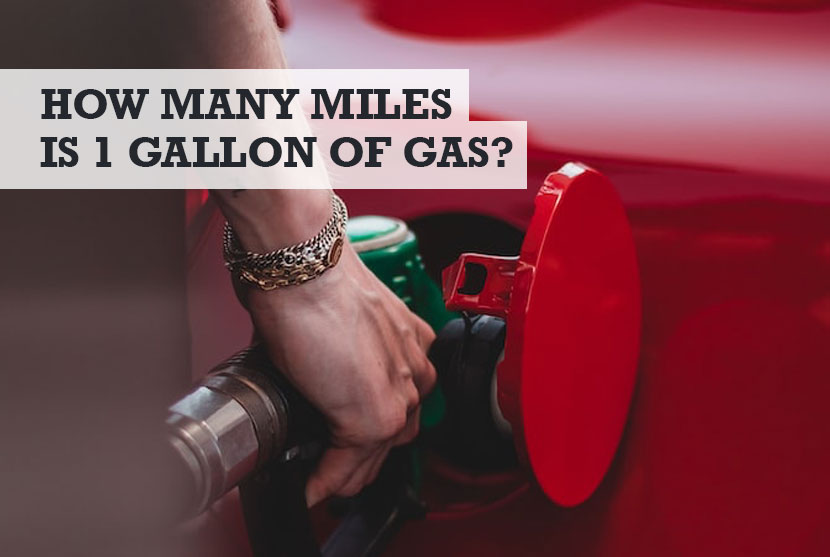With the soaring price of gas across the globe, drivers now devise different methods to preserve the gas in their tanks. One of these methods includes tracking how much gas they need per trip.
Knowing your car’s MPG (Miles Per Gallon) helps track how much gas you need per trip and saves you money in the long run.
Based on this, it’s useful to know how many miles can your car take you on a gallon of gas?
On average, your car should take you 20-30 miles per gallon of gas. However, some vehicles record up to 60 miles on a gallon. When it comes to mileage, several factors affect your car’s efficiency. Some of the factors include car weight, bad driving habits, climate, and poor maintenance.
Stick with me as I discuss how many miles your car can cover per gallon of gas while pointing out several factors that affect your vehicle’s mileage. I will also go further to share a few steps you can take to improve your car’s gas economy.
How many miles can your car travel per gallon of gas?
Your car is estimated to travel between 20 to 30 miles on a gallon of gas. Nonetheless, it is not unusual to find vehicles that go beyond the 30-mile mark, with some reaching up to 60 miles.
In determining mileage, no one rule fits all. Various factors will eventually determine how many miles a car covers per gallon of gas.
As a driver, whether you achieve a better gas economy or not, it is not wise to run your car on an empty tank. You either risk getting stranded or damaging your engine.
Factors that affect how many miles you can get on a gallon of gas
Everyone desires a vehicle that gets good gas mileage because it does not stop at saving you money but also benefits the environment. However, some internal and external factors can affect your vehicle’s MPG. Let us investigate some of those factors:
1. Driving Habits
How you handle your vehicle on the road directly impacts your gas mileage. Bad driving habits on highways and traffic can reduce your gas economy by 30%
Aggressive driving, such as speeding, erratic acceleration, burning rubber, and frequent braking, will cost you more gas than a smooth ride.
Another driving habit that affects or decreases your vehicle’s MPG is excessive idling. Aside from increasing your gas consumption, frequent idling can also damage your car’s engine and battery. Engine idling may seem harmless, but it significantly affects your wallet and the environment.
2. Car weight
The EPA estimates that a vehicle’s MPG will decrease by 1 to 2 percent for every 100 pounds added to it. This means that the heavier your car is, the more energy it will need to accelerate and the more gas it will consume.
Extra weight on your vehicle results in greater friction and rolling resistance, both of which spike gas consumption.
Also, cars with four-cylinder engines offer a better MPG than those with six- or eight-cylinder engines.
3. Road Condition
Driving on rough roads, hilly or rocky terrains, and in traffic will cause your engine to use up more gas than usual.
This is because driving over bumps and bad road conditions like cracks and potholes causes your vehicle to burn more energy, which in turn decreases your MPG.
Handy Hint: Here are some tips on how to save on fuel when driving up and down hills.
4. Weather Conditions
With a gas-powered car, you will experience a drop in MPG by up to 12 percent when the temperature outside is at 20° compared to when it is 77°.
Also, because the air is less thick in cold weather than it is in hot weather, your car’s engine has to work harder to maintain its operating temperature, which might result in higher gas consumption.
5. Maintenance
A poorly maintained car is likely to consume more gas. Inadequate maintenance has an adverse effect on performance, increases emissions, and may lead to expensive repairs and a decreased resale value.
Sticking to routine maintenance is vital if you want your car to perform at its optimum.
Other factors that affect your car’s MPG include oil type, tire condition, and dirty fuel injectors.
How to calculate your vehicle’s MPG.
Understanding how to accurately calculate your car’s miles per gallon is crucial for tracking your gas mileage.
To calculate your car’s MPG, follow these simple steps.
Step 1: Fill up your tank
Start by filling your tank with gas then proceed to reset your trip odometer or record the mileage on a piece of paper.
Step 2: Drive till refill time
Drive your car as you would normally, till it is time for a refill. Refill should be done when your tank is less than half full.
Step 3: Fill up your tank again
While refilling your tank the second time, pay close attention and take note of the number of gallons it took to fill the tank. This number represents the number of gallons you used since the last fill-up.
Step 4: Record mileage
Write down the mileage after the second gas refill or record the new odometer reading.
Step 5: Calculate
Begin your calculations by subtracting the first mileage of the first fill-up from that of the second. The result of the subtraction tells you how many miles you drove since your last gas refill.
Divide the result by the number of gallons it took to fill up your tank. This will give you your car’s MPG.
How to improve your car’s gas economy
Improving your car’s gas economy is achievable if you stick to the following tips:
- Avoid over speeding, excessive braking, and rapid acceleration.
- Avoid excessive idling. Turn off your engine if you must wait for more than a minute or two.
- Avoid adding extra weight than recommended in your car.
- To keep your speed steady on the highway, use cruise control.
- Replace faulty spark plugs.
- Follow routine maintenance as recommended by your auto manufacturer or a technician.
- Check for wheel misalignment.
FAQs related to how many miles in a gallon of gas
How many miles can my car get me on a full tank?
The average car is expected to go between 200 to 400 miles on a full tank. This is influenced by a variety of factors, including the car’s brand, maintenance, driving habits, and weather conditions.
How much gas is left in my car when the gas light comes on?
Cars are estimated to have about 2.5 gallons left in the tank when the gas light comes on. With 2.5 gallons left in your tank, you can go anywhere between 30-60 miles.
Again, several factors will determine how many miles you can travel.
More simple car guides…
Image in header via https://unsplash.com/photos/kJCAKWTH6u4






